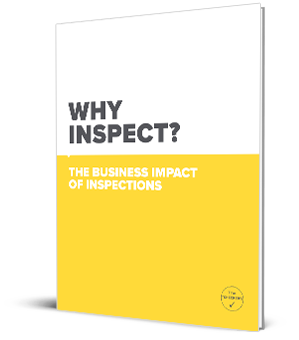An inspection checklist is an essential tool used in numerous industries for assessing the compliance of a particular procedure, process, facility, or equipment with standards set either by internal, local, or international governing organizations. When appropriately used, inspection checklists create a written record and provide clear documentation of the last inspection, outline that the safety procedure was followed, and detail any corrective action that needs to take place.
Here are five types of checklists you can use to make your workplace safer and more efficient:
1. To-do Checklists
This is the most common type of checklist. They are simple and easy to use. To-do checklists outline what needs to happen to stay on task but in no particular order. These can include both long-term goals and tasks that need to be completed, but not necessarily immediately. The good thing about to-do checklists is that one inspection item doesn't have to depend on another, meaning that you can check things off as you get to them. Inspection items often go on a to-do checklist to ensure a job is being correctly performed. Otherwise, if the job isn't completed consistently, a to-do checklist is a reminder of the process that may have been overlooked or forgotten over time. Because months can pass between two general inspections, a to-do list is a right format to ensure that everything is properly inspected.
2. Training Checklists
When employees are required to have specific knowledge or skills in order to be competent on the job, training is in order. But it's not enough to just provide the training; it also needs to be regularly evaluated. Training should be assessed for every job position at least once a year, looking for legislative updates, new or adapted equipment, and changes within the job. Operational refresher training should also be provided when necessary.
3. Task Checklist
In most cases, when you think of checklists, you are thinking of task checklists. Though similar to a to-do checklist, a task checklist is procedural and needs to be completed in a specific order. There are two types of task checklists:
Pre-startup inspections - This type of task checklists can determine if something is wrong with the equipment before work begins.
An emergency evacuation checklist - this task checklist needs to be completed in a particular order because time is of the essence. Without this checklist, some steps can be overlooked due to your quick processing.
4. Troubleshooting Checklist
To avoid potential injuries, you need to think ahead to what can cause them, and that is what the troubleshooting checklist does. Instead of outlining the procedure with the task checklist, the troubleshooting checklist anticipates what to do if the process goes wrong. It asks the right questions, has an appropriate plan of action, and ensures that a safe work environment is maintained for everyone. Another type of troubleshooting checklist is preventative maintenance, a predetermined work scheduled to avoid deterioration or sudden equipment failure.
5. Coordination Checklists
This type of checklist is designed for situations where multiple people are working on one task or assignment. Coordination checklists are beneficial in big organizations. Another kind of coordination checklist is a job hazard analysis, where every job is broken down into distinct tasks to reduce the risk of injury to employees.
Take Away
Checklists keep people organized and on task. They give guidelines that those performing inspection can easily follow. Everyone feels more confident in equipment and safety procedures knowing they are inspected regularly. Regularly scheduled inspections can ensure that your organization follows health and safety standards and that all workplace risks are under control.











